Aura Points
Mark Honeychurch - 14th October 2024
After finding out a couple of weeks ago that my kids were aware of “mewing” six months before I was, I jokingly berated them and asked them to let me know of any other nonsense they might come across online. This request was instantly met with a barrage of weirdness and nonsense, although one stood out immediately - Aura Points.
According to my kids - and, to make sure they weren’t just trying to wind me up I checked on the internet and found that The Guardian agreed with them - there’s a trend at the moment of talking about the earning and losing of Aura Points, where a good or altruistic act will earn points, and a stupid or embarrassing act will lose them.

Now my first instinct when I learned this was to rant about how it makes absolutely no sense. An aura is meant to be an outline of colour around someone’s body that conveys information about them - their health, their mood, or their future. Different colours have different meanings, and other properties of an aura such as its size, movement and colour changes are also supposed to provide extra information about the person. So, given this complexity, the idea of reducing auras to a points system, like karma is often treated, seemed trite.
But then I remembered that the entire idea of auras is nonsense, from start to finish, and I kept my rant inside my head. But why are auras nonsense, you may be asking (although probably not, given that you’re a skeptic). Let me tell you why…
A brief history of auras
Firstly, I’m going to ignore the claim that auras have been known about since the time of cavemen, which we apparently know because of cave paintings that documented them. This appears to be purely speculative, based on the fact that sometimes cave paintings may have an outline to them.
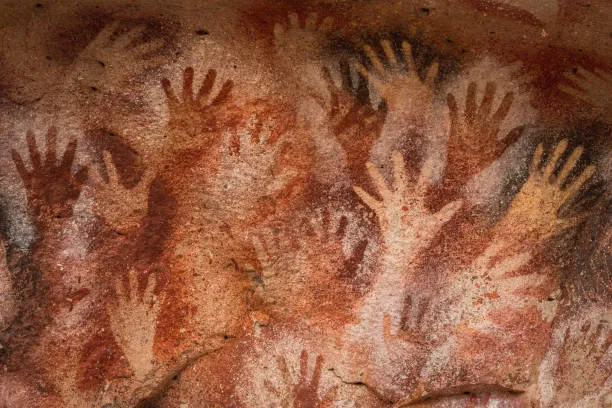
In reality, the idea of auras, like so much other nonsense, seems to have been adopted and promoted in the early 1900s by Theosophy, the religious group who, despite insisting they value the truth, seem to be suckered by every passing huckster into believing anything and everything without bothering to ask for evidence. In this case, the idea came from Church of England minister Charles Leadbeater, who announced that he could see auras after visiting India and learning about the idea of Chakras.
After being promoted by Theosophy, auras were picked up by some well-known spiritual gurus, including Edgar Cayce and Rudolf Steiner. However, according to Wikipedia, auras didn’t really come into the public’s consciousness until the 1980s, thanks to the popularity of New Age nonsense.
So, as with many other supposedly ancient mystical practices, auras are a recent invention that barely date back more than 100 years. And, again like many other of these recently invented ways to take people’s money, nobody seems to be able to agree on what auras are, who’s able to see them, what the different colours mean, etc. A brief look online for the meanings of aura colours brings up a lot of lovely looking images that contradict each other, and individual aura “viewers” post wildly different ideas online about what the meanings of different colours and shapes of auras might be. There does seem to be some commonality, however it appears to be based on Western ideas of the meaning of colours, such as red for passion, yellow for happiness, and green for nature.
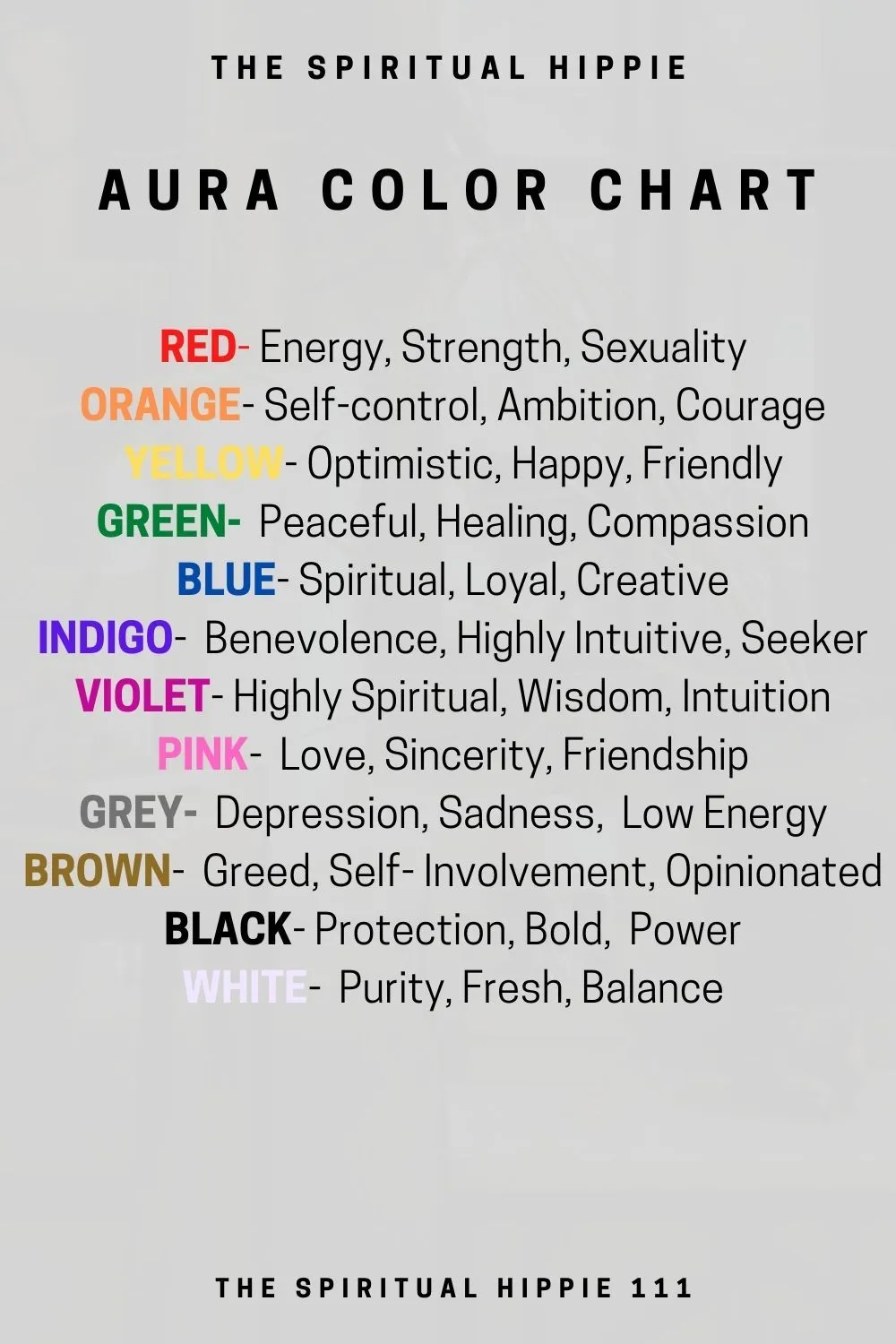
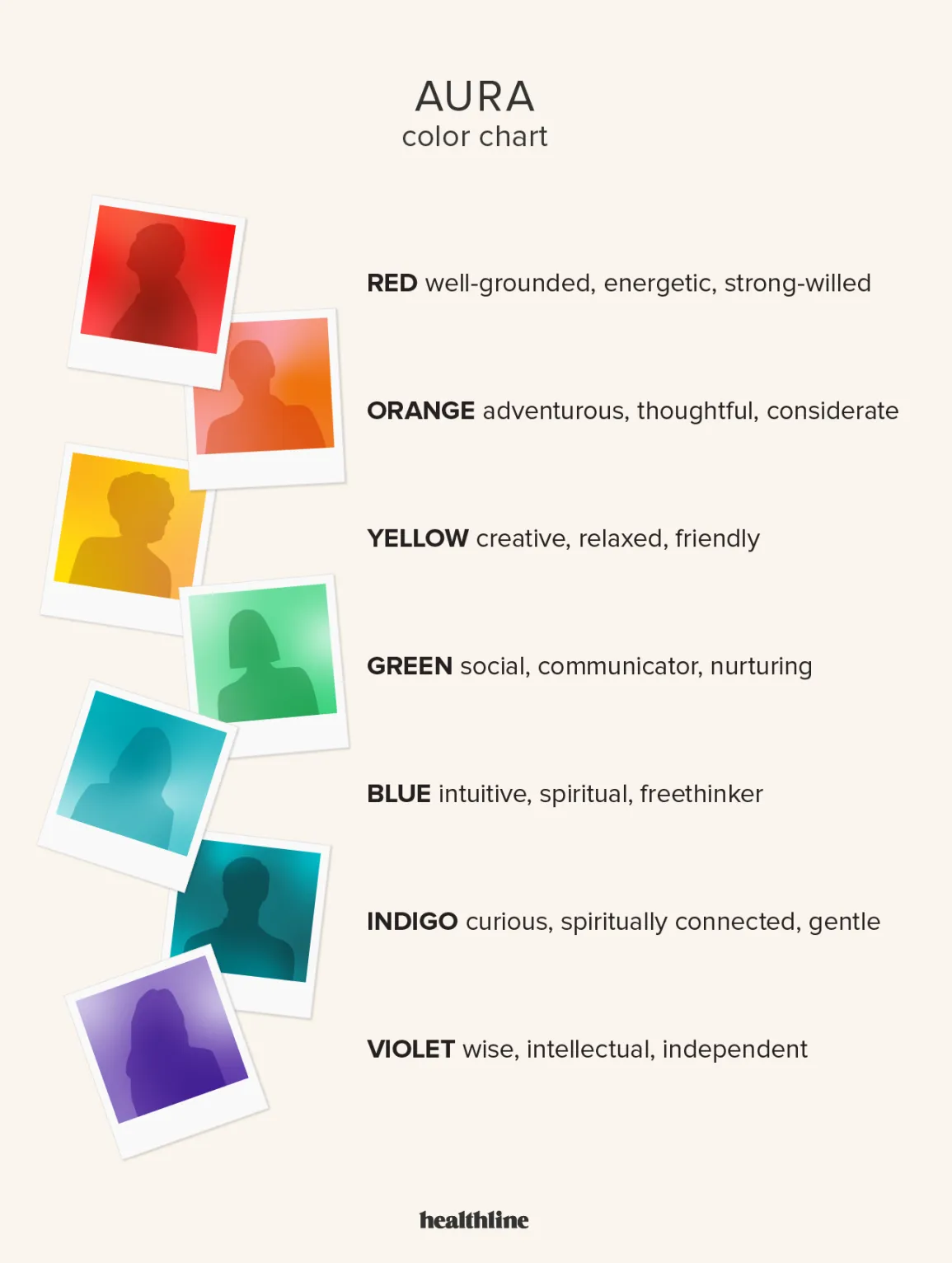
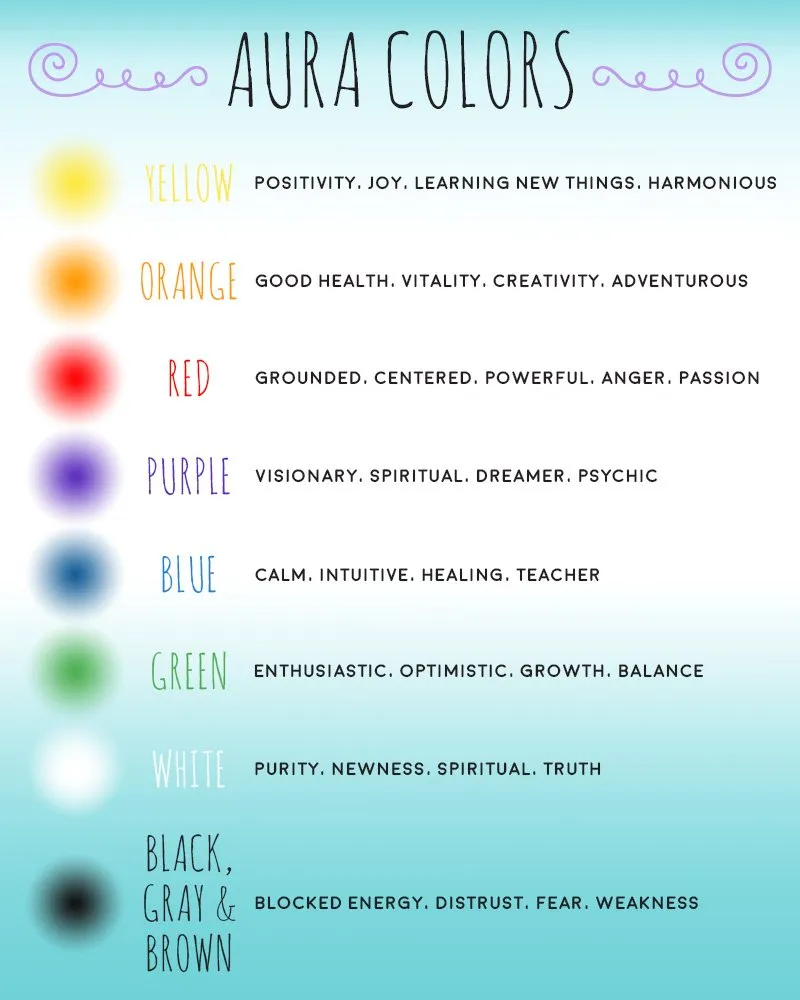
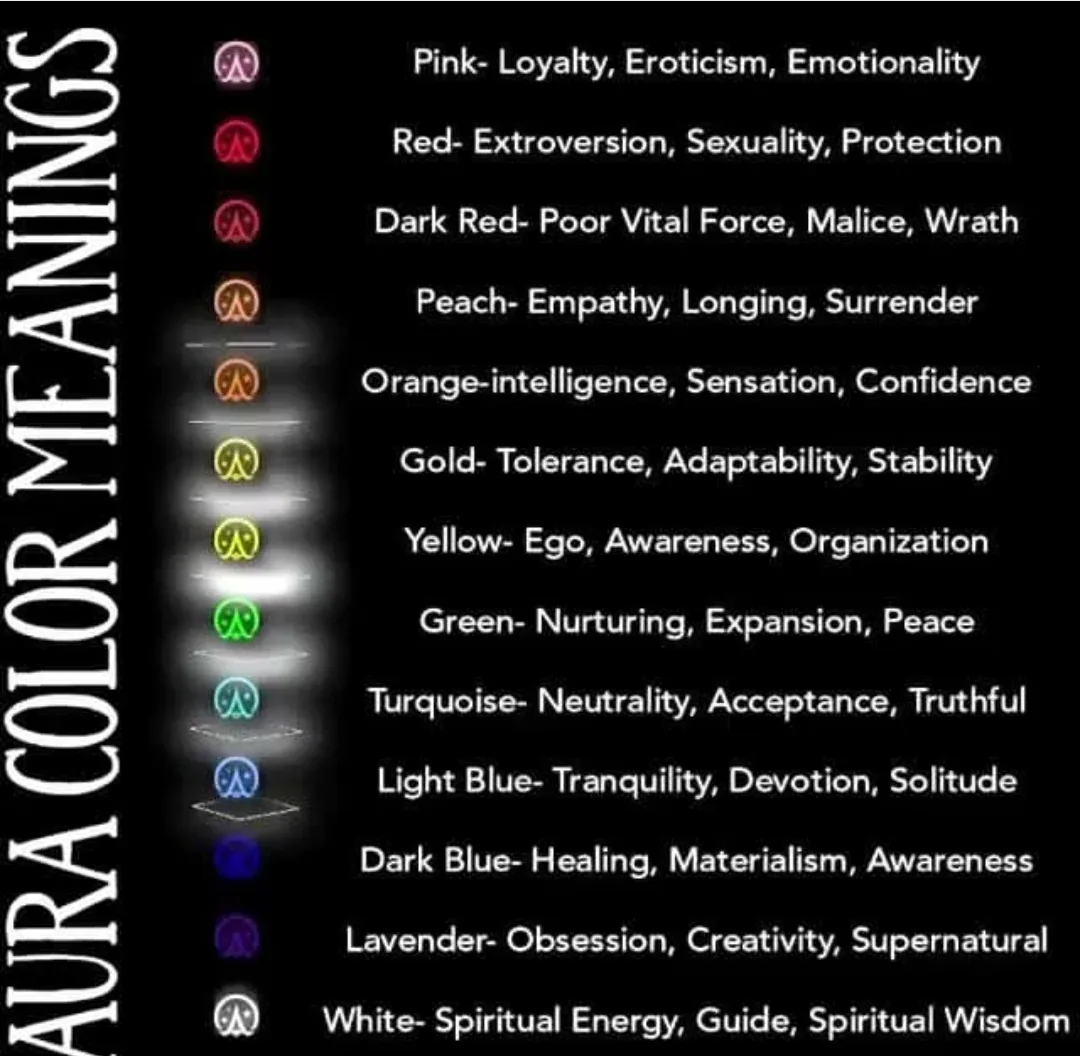
Aura Photography
A friend told me the other day that she had visited her terminally ill mother-in-law recently. The mother-in-law seemed in quite good spirits, and told my friend that she’d been to see her alternative medicine practitioner. The practitioner had sold the mother-in-law on the idea of having her aura photographed, and the resulting photograph apparently showed that, contrary to the advanced cancer diagnosis that medical doctors have given her, apparently her aura shows that everything’s going to be okay.
After getting over the feeling of repulsion that someone would do this to an elderly person who’s having to face her mortality, I figured I’d never actually looked up how aura photography works. Obviously the cameras and software that people use aren’t really photographing auras, otherwise we’d have a whole new branch of science studying the phenomenon and its consequences. But these photographs are showing something around people. So, how the heck do they do this?
Firstly, I’d like to point out that aura photography is not Kirlian photography. I guess it could be argued that these things are similar, at least in that they both purport to take photographs of people’s life energy. But Kirlian photography involves placing an object on a photographic film and briefly passing a high voltage through it. The places where the electricity passes from the object into the film make the paper react as if it was seeing light - and with colour film rather than black and white, the different chemicals for capturing each of the colours will react differently to the electricity. Once the film is processed and a photograph printed out, you get to see a pretty halo:
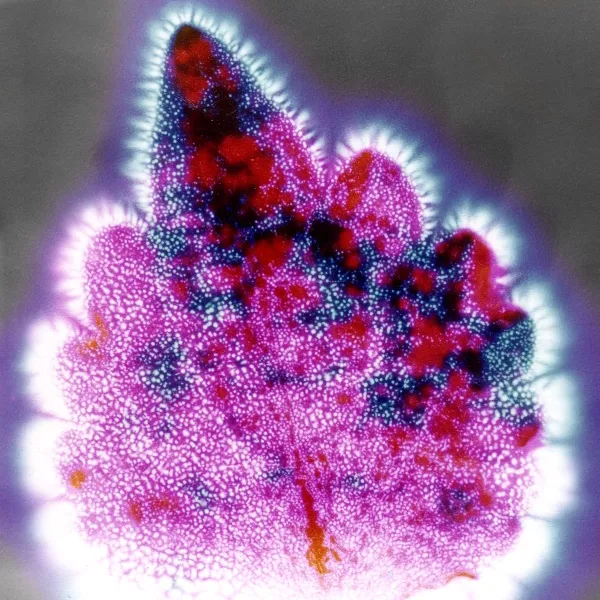
However, despite what the spiritual brigade will tell you about how this is capturing the life essence of the thing you’ve photographed, in reality you’ve just taken a nice photo of where there’s moisture - as where there is moisture, the electricity is more easily able to travel and jump from the object to the photographic film. Of course, the science is a little more complex than that, and the Wikipedia page contains phrases such as “coronal discharge” and “stochastic electric ionization”, but hopefully you get the basic idea.
Anyway, as I said before, aura photography isn’t the same as Kirlian photography. Nobody asks you to lie down on a large piece of photographic film while they electrocute you when they take your aura photograph. Instead, we can thank such luminaries as Guy Coggins, who invented and sells the AuraCam 6000.
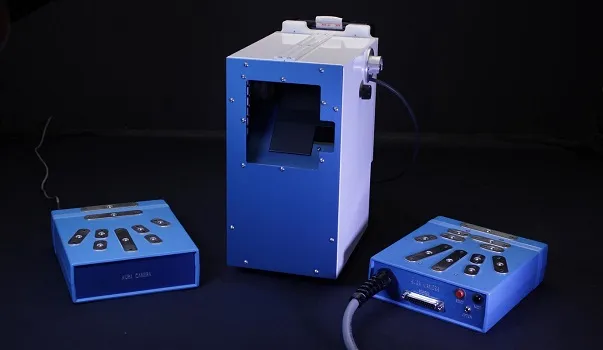
Guy’s AuraCam uses “electro-dermal and temperature readings” to interpret your aura and add it to the photograph. The hardware, first created in the 1980s as the AuraCam 3000, looks like it’s only had a single refresh since then, way back in the 1990s. It’s definitely showing its age, even sporting a parallel port (which, many years ago, used to be used for plugging printers and scanners into a computer because of its high “parallel” bandwidth).
The two boxes are where you place your hands, and this is where your readings are taken from. Basically, they’re acting like a random-number generator, using the temperature and conductivity of your hands to generate a value that is then used to pick a colour for your aura. The camera uses Polaroid-style instant-developing film, and I have to presume that inside the box there are some lights that will light up at the same time that the photo is exposed, adding the coloured aura to the image.
Here’s an example of an aura photo from an AuraCam 6000 that I found on a Reddit thread from two years ago - notice the fact that somehow there’s only a single aura, despite the fact that there are two people in the photograph:
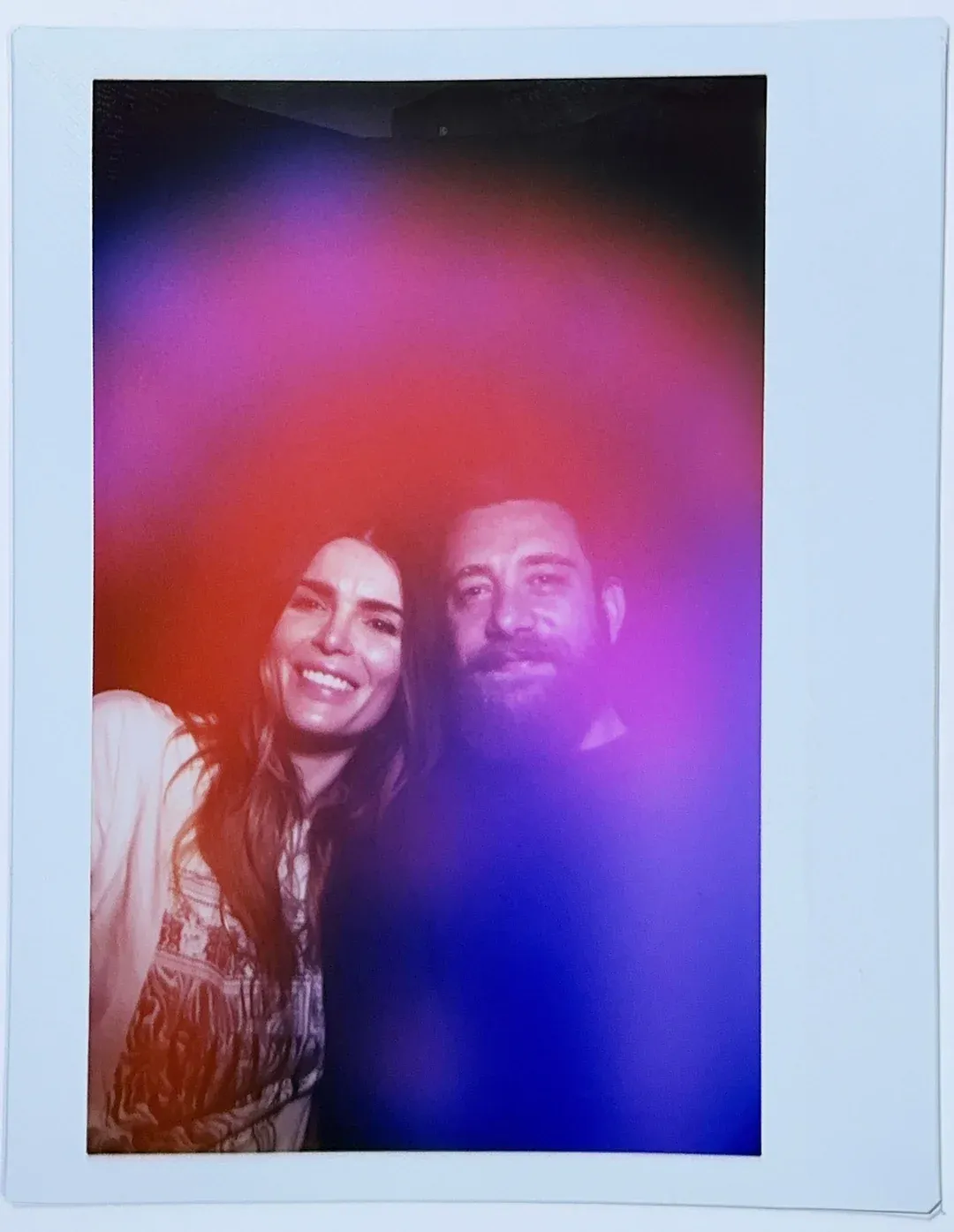
You can also read a little about the process of having your aura photo taken in New York a kind-of-skeptical Guardian article (“Auras may not be real, and the good people who run Magic Jewelry print “for entertainment purposes only” on the back of each aura photo”), and watch a horribly credulous video from a wannabe social media influencer who seems to have been sucked in by a Los Angeles aura photographer’s lies:
Of course, these days there are less antiquated ways of having your aura photo taken, including software such as the “AuraCloud 3d Pro”, “Aura Video Station 7 Pro” and “WinAura” (also from Guy Coggins). Despite moving into the digital age, and using modern webcams to take the photos, these solutions still insist on using a pad for placing your hand on, as a way to “read” the aura that it then draws over the picture of the person. In reality, I have to assume that, like the AuraCam 6000, these devices are just being used as a random number “seed” generator, which is used as a basis for picking the colours that are added to the photo.
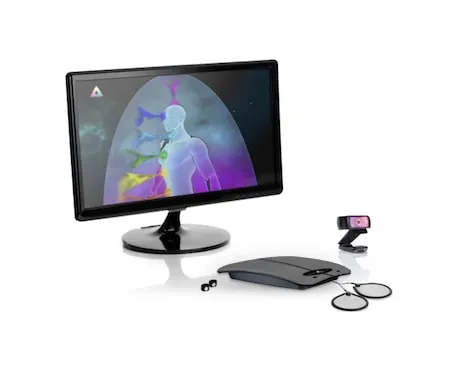
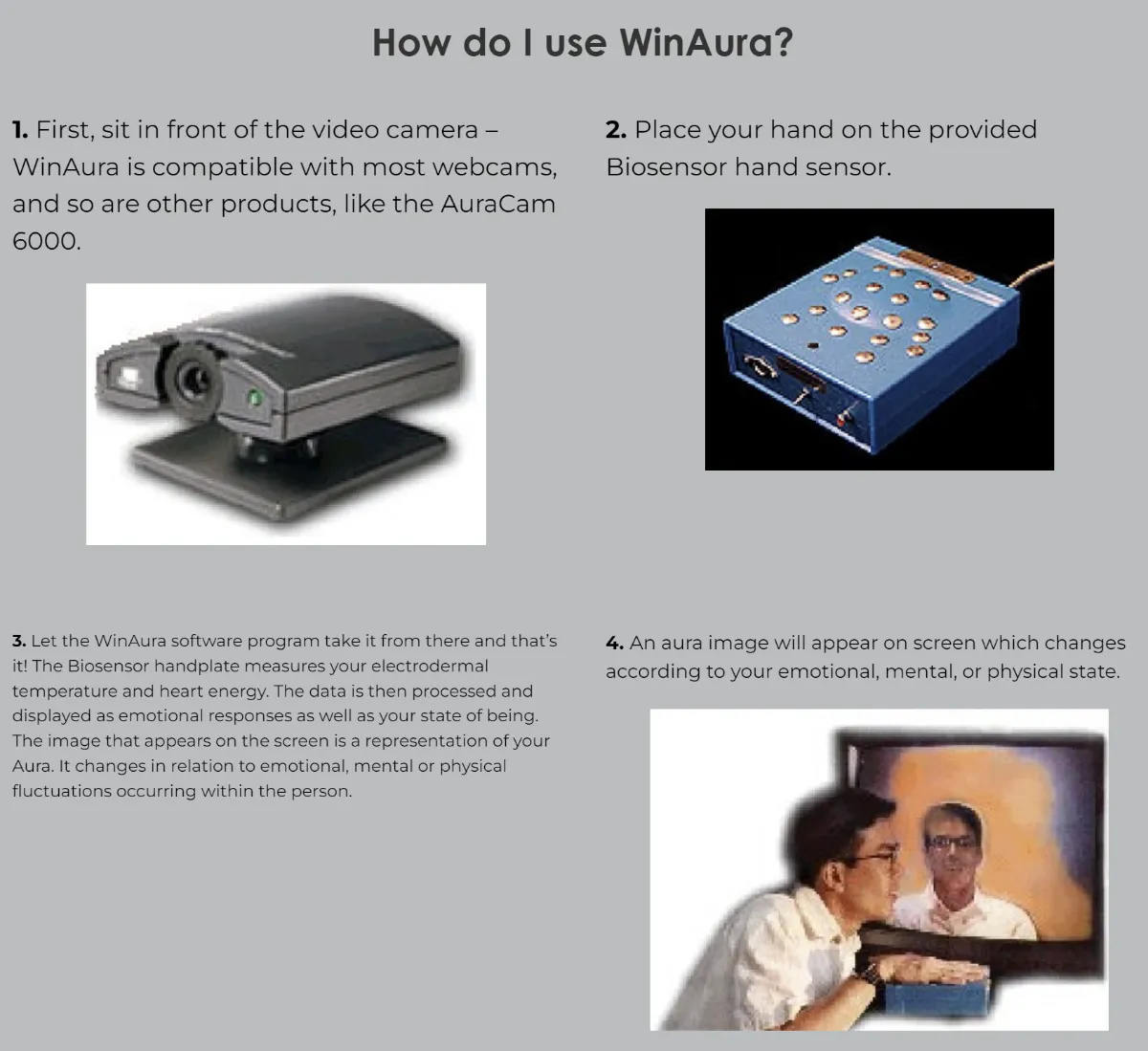
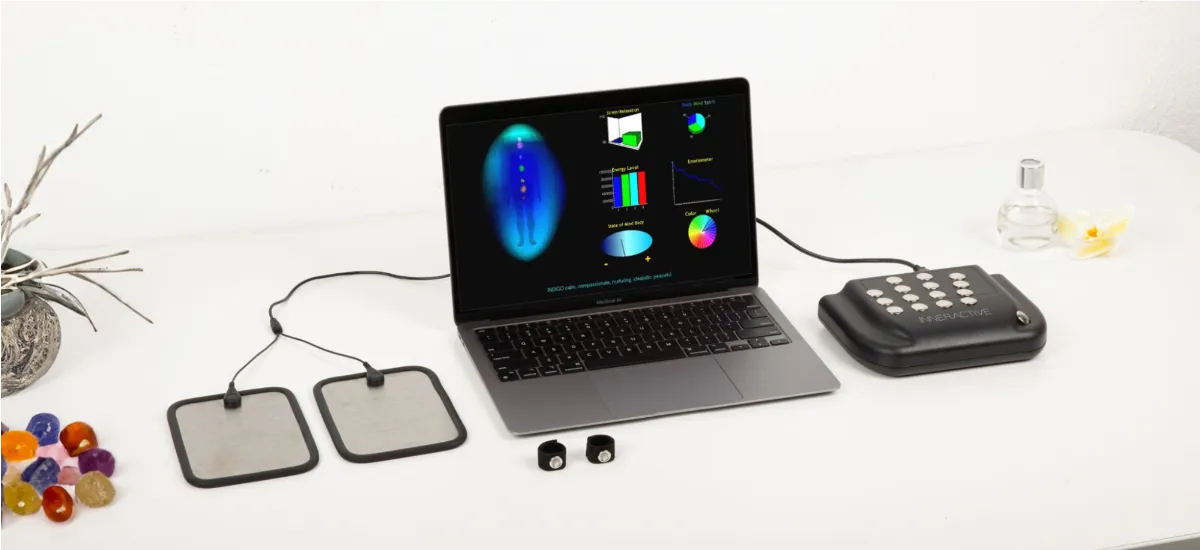
It’s a pity these devices are likely horrifically expensive to buy (although I couldn’t find any prices directly, I read in one blog post that the AuraCam 6000 will set you back US$16,000, plus $5 per instant photographic film), and they’d also be unethical to either use for their intended purposes or sell on to somebody else. I’d love to get my hands on each of them and run some simple tests to see whether, like Scientology’s e-Meter, simply changing the amount of force you use on the hand reader is enough to control the resulting output of the machine. I’d also love to pull the AuraCam 6000 part and document what makes it tick, although with the digital solutions everything will be happening in code.
Getting back to my original thread about Aura Points, I think that given just how much nonsense the entire idea of auras is, I have to give credit to the kids of today for not taking it seriously, and instead for just reducing it to a silly parody where you have a scoring system. Like Karma before it, this kind of ridicule will hopefully help people to realise that the whole idea of auras is just daft. And, if anyone ends up wanting to know more and visits the Aura Wikipedia page, you can be assured that they’ll be greeted with a sufficiently skeptical intro about how it’s pure pseudoscience:
In spiritual alternative medicine, the human being aura is seen as part of a hidden anatomy that reflects the state of being and health of a client, often understood to even comprise centers of vital force called chakras. Such claims are not supported by scientific evidence and are thus pseudoscience. When tested under scientific controlled experiments, the ability to see auras has not been proven to exist.